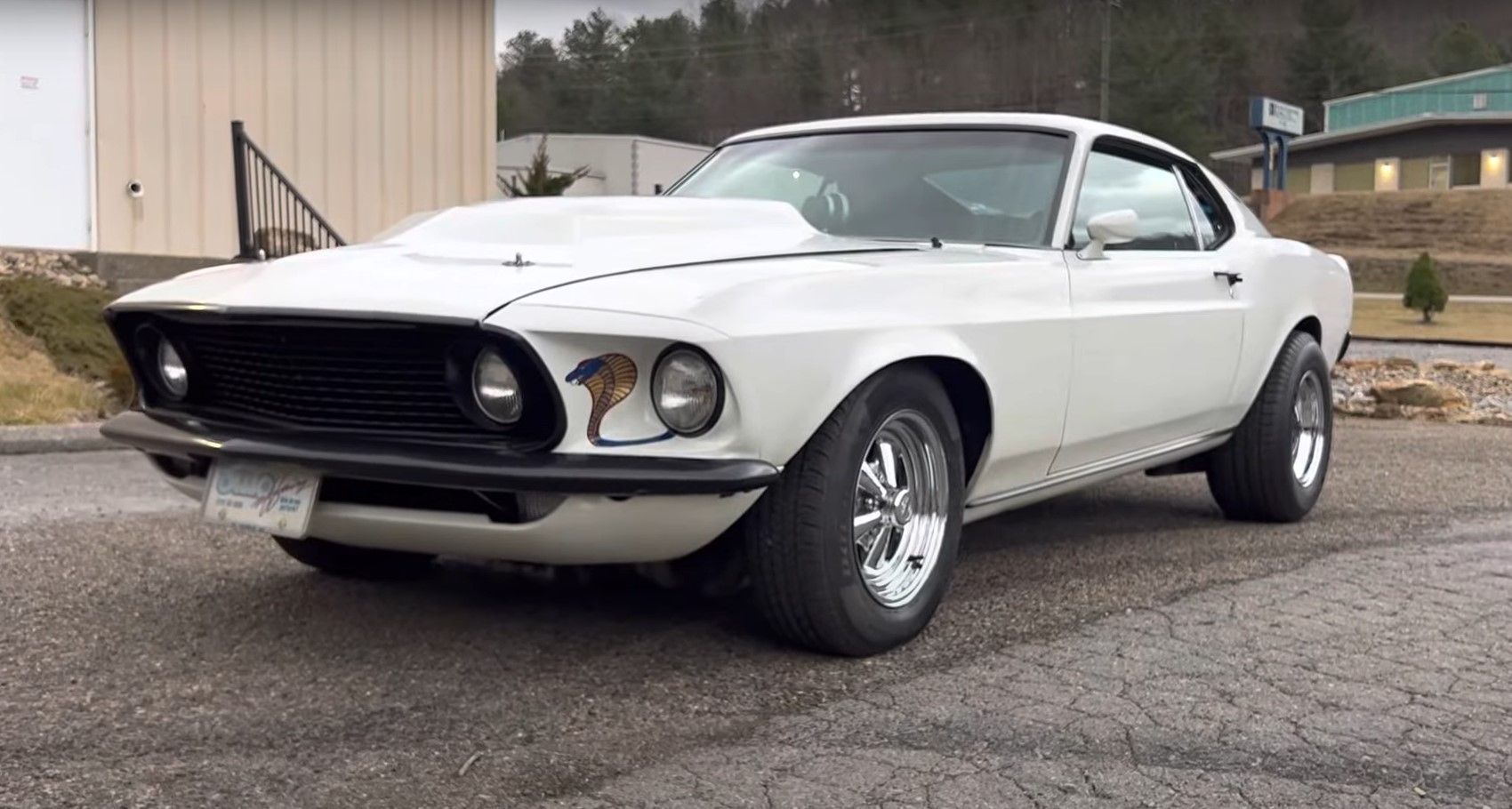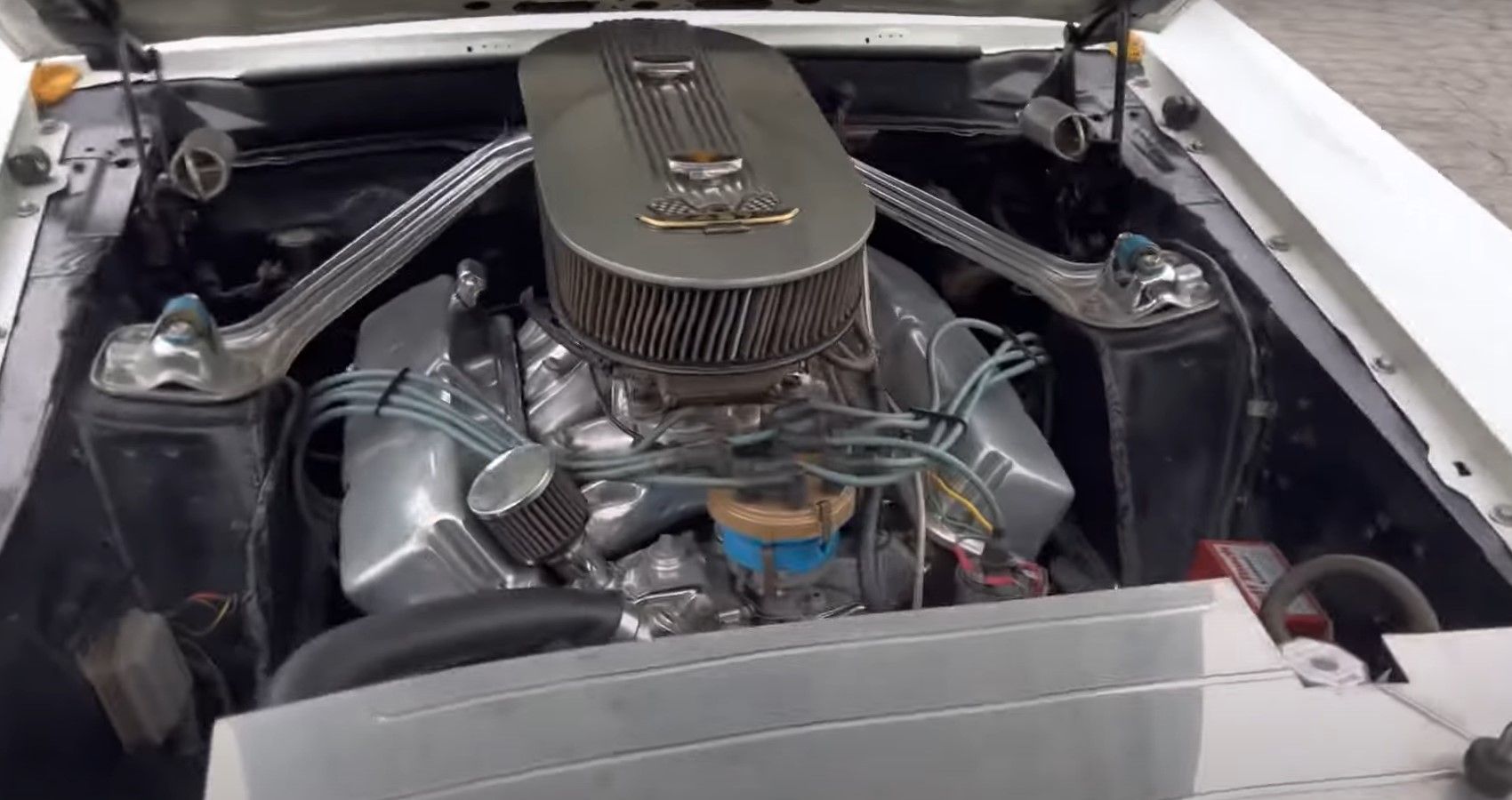The classic 1969 muscle car shares an iconic V8 with some famous race cars from Ford Engineering, including some of Carroll Shelby’s AC Cobras.
Custom Details Hint At The Ford Mustang’s Racing Spirit
With its nine-inch Ford rear-end and 31-spline rear axle, this Mustang looks race-ready. It’s sporting a smoothed large cowl induction hood, deep-dish Cragar wheels, and blacked-out trim. The most exciting custom details, though, are the strikingly painted cobras emerging from its headlights and the carefully airbrushed “Money Trap” graphic on the rear.
The car’s body and paint job still look amazingly clean. While the car does have a deleted back seat, the owner states that it can still go back into the car with little modification. Inside, the car’s most recent upholstery consists of an unobtrusive black suede-like fabric. The factory gauges remain, with the original odometer showing only 66,461 miles. On the back of the car is the original 1980s California license plate.
Ford’s Ingenious 427 Is What Makes This Car A Gem
When enthusiasts talk about a tunnel-port 427 Sideoiler engine, it’s usually in the context of Ford’s glory days in racing. This massive, high-flowing V8 withstands high-rpm bashing. So, finding one swapped into an H-code Mustang that originally ran on an intermediate-block 351 Windsor is mind-blowing.
Ford Engineering built this engine as a workaround in 1967 when NASCAR banned its intimidating 427 SOHC in response to Chrysler’s complaints. The tunnel-port intake uses big round intake ports and centered push rods to greatly improve the engine’s airflow, especially in the Money Trap’s dual quad version. In addition, the Sideoiler design incorporates a special oil channel on the engine block’s left side, instead of in the center. The oil is then delivered directly to the crank.
After Ford combined these two designs, it had a fearsome double whammy of an engine. It boasted a compression ratio of 12.5:1, a tolerance of 7,000 RPMs, and an output of around 600 hp.
While American Mustangs hasn’t revealed whether the Money Trap has had a few runs on the dyno, the stats alone are convincing. So while we can’t be sure whether the tunnel-port 427 Sideoiler ultimately bankrupted its previous owner with a name like Money Trap, we think it’s money well spent on this classic car.

